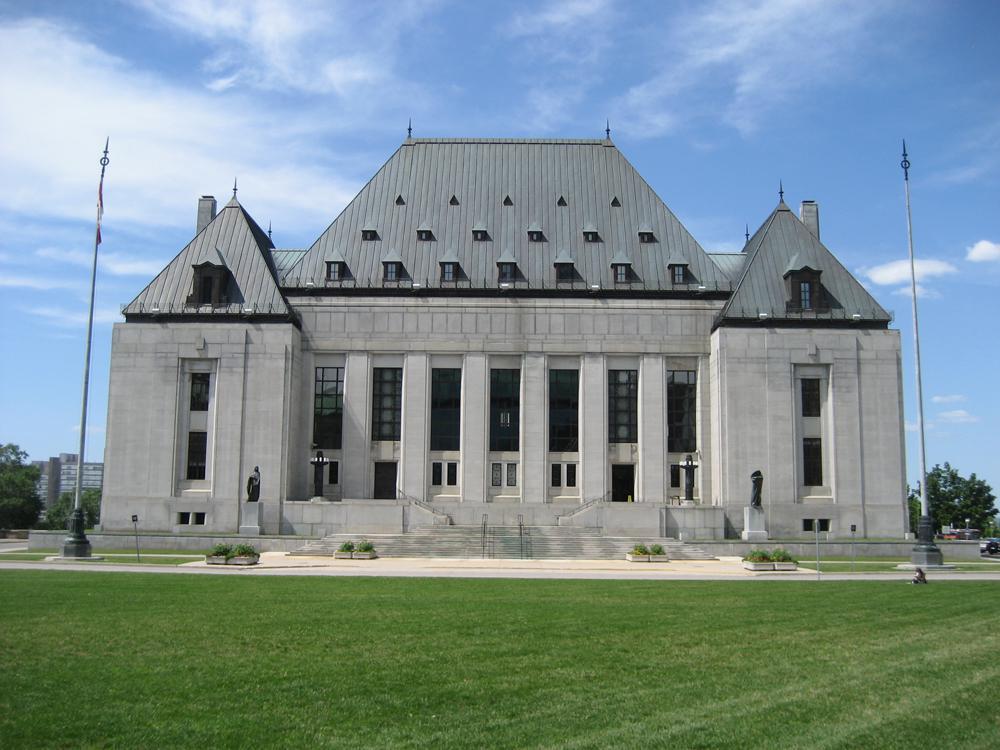Today, CARFAC and RAAV—two non-profit organizations that represent Canada’s professional visual artists—won their appeal against the National Gallery of Canada in the Supreme Court of Canada.
The unanimous decision from a panel of judges was made just a few hours after the appeal hearing began this morning.
“It’s fantastic,” said artist and CARFAC member Karl Beveridge, who had worked on artist-fee negotiations with the National Gallery of Canada for more than ten years. “They [the Supreme Court judges] rarely do this, but they made a decision right away.” (Typically a Supreme Court decision takes at least a few months.)
CARFAC and RAAV had been appealing to get the National Gallery back to the negotiating table to create a binding collective agreement on certain kinds of artist fees. Negotiations on creating a binding collective agreement for artist fees began in 2003 in accordance with the Status of the Artist Act. But starting in 2007, the National Gallery’s legal advisers contended that certain fees were covered by the Copyright Act, which favours individual over collective negotiations, so the gallery refused to collectively negotiate certain kinds of fees—including exhibition fees, which fall in Canada under copyright.
“It’s an important, historic win for us,” Beveridge said. “The amazing thing is it includes all issues of copyright, not just exhibition right, but also reproduction right. So that will be on the table as well.”
(Reproduction rights include phenomena such as reproducing an artist’s work in a book, catalogue or other publication.)
The judges’ decision—which, pending a judges’ comments brief to come, seems to put Status of the Artist legislation above Copyright Act when it comes to collective negotiations—will also “send a signal to the rest of the country,” Beveridge noted. “It’ll set a precedent.”
As soon as possible, Beveridge hopes, “we’ll be going back to the bargaining table… everything [in the collective agreement] has been negotiated except for the fees, and so we will be going back to negotiate [those] rates.”
CARFAC and RAAV had won an initial federal tribunal on this matter in February 2012, which urged the National Gallery back to the bargaining table. The gallery appealed that tribunal decision in September 2012, and in March 2013, the Federal Court of Appeal found that the gallery did not bargain in bad faith. This latest Supreme Court decision comes from CARFAC and RAAV’s subsequent appeal of that finding.
This story will be updated as more information—such as comment from the National Gallery of Canada—becomes available. For more information about the origins of this appeal, read our story 5 Things You May Not Know About the National Gallery Artist Fee Fight.
Update – May 14, 2014, 5:40 p.m.: The National Gallery of Canada has issued an official comment regarding the Supreme Court’s decision. It reads as follows: “The National Gallery of Canada (NGC) received this morning the long awaited clarification provided by the Supreme Court of Canada on the harmonious interaction of the Copyright Act and the Status of the Artist Act with respect to the compensation of artists for the use of their works. The details of the decision of the Supreme Court of Canada will follow. The NGC is ready to go back to the negotiation table after the written judgment is rendered.”
This story was corrected on May 15, 2014. The original article suggested that CARFAC was the only artist non-profit involved in the appeal. RAAV was as well. We regret the error.

 The Supreme Court of Canada in Ottawa / photo by Flickr user detsang
The Supreme Court of Canada in Ottawa / photo by Flickr user detsang







